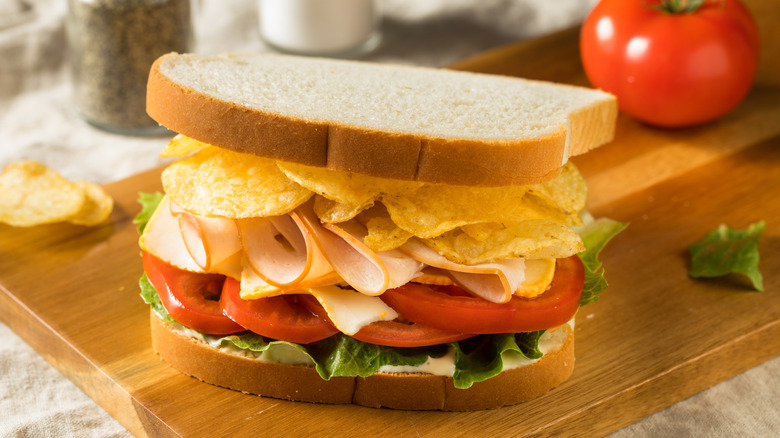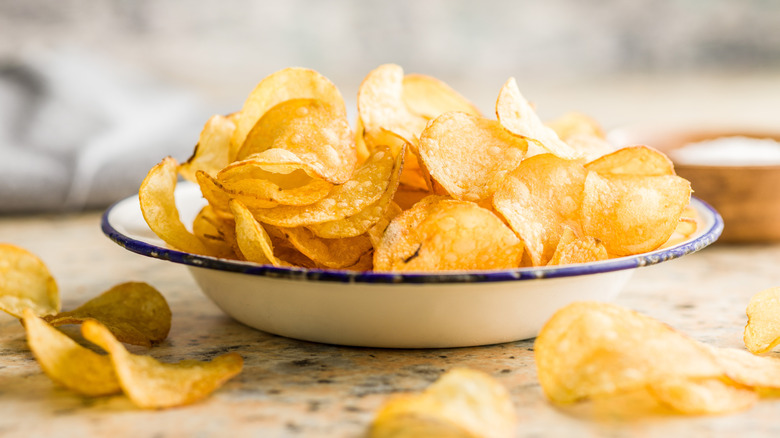Liven Up Your Sandwiches With This Childhood Lunchroom Trick
Sack lunches get a bad rap. Although not nearly as maligned as the sad desk variety, or the more precise woman-laughing-alone-with-salad tableau, they conjure images of long walks uphill both ways, lonely cafeteria meals, and the kind of premature ennui that comes with being a kid. "Sack" even just sounds kind of sad. Crumpled. Deflated. But, like we all hopefully learned when we were little, it's what's inside that counts, and if you turn that same smushed sack upside-down, you might just find a smile.
Putting potato chips on a sandwich is a blast to a rosier past. Sure, we all had plenty of days where it seemed like we were encased in peanut butter and jelly. But others, when we'd make a great lunchtime trade or maybe dad would drop a happy meal or a fleeting McRib off at school, could feel magical. And the first time a child learns that you can, in fact, put potato chips on a sandwich (and use the crunchy snack for cooking in general), far surpasses any Santa Claus encounters or tooth fairy times. What was once a mashup of floppy cold cuts and store-bought bread is transformed into a bit of haute cuisine. The lively taste and texture combination can even be the first thing to spark an interest in cooking that lasts a lifetime. And it all works for a reason.
Why potato chips work in sandwiches, plus some tips for success
Potato chips don't just happen to be so delicious. Like other ultra-processed foods, they are engineered to satisfy, to create a craving, and to satisfy once more. Arranging these precise proportions of salt and fat is a multi-billion dollar business. It makes all those old slogans about not being able to eat just one seem a little like a threat. Texture is also key to how we perceive foods, and the novel crispiness of potato chips brings a juxtaposition that signals that this particular sandwich is more complex, and thus more expertly prepared, than a chipless 'wich. Plus, when you're a kid, something like putting potato chips on a sandwich seems just a little wacky, and wackiness is a winning proposition at any age.
Since this is all about nostalgia, go nuts with your sandwich construction and chip choices. But, believe it or not, there are actually some best practices that can make a good potato chip sandwich great. To build a better sandwich, keep your wet and dry ingredients separate. We love little more than ham and Swiss on a roll with chips on top, but if you're a condiment devotee, at least keep the mayo and mustard on the bottom to keep the topping's crunch intact. Likewise, potato chips won't perform as well in salad sandwiches like tuna, as the moisture accelerates sogginess. Kettle-cooked varieties work best in all cases thanks to their rigid durability. A layer of whole chips is snappier than a pile of broken bits. And it all brings a bit of levity to make for a much happier lunch, served from a sack or not.

